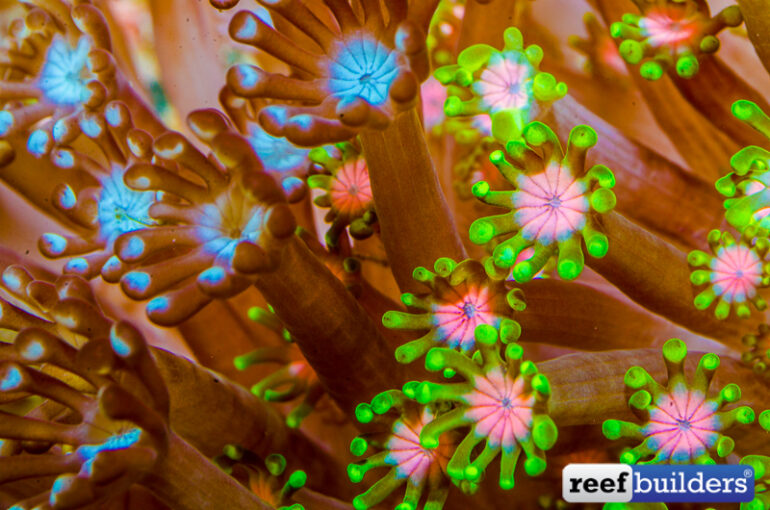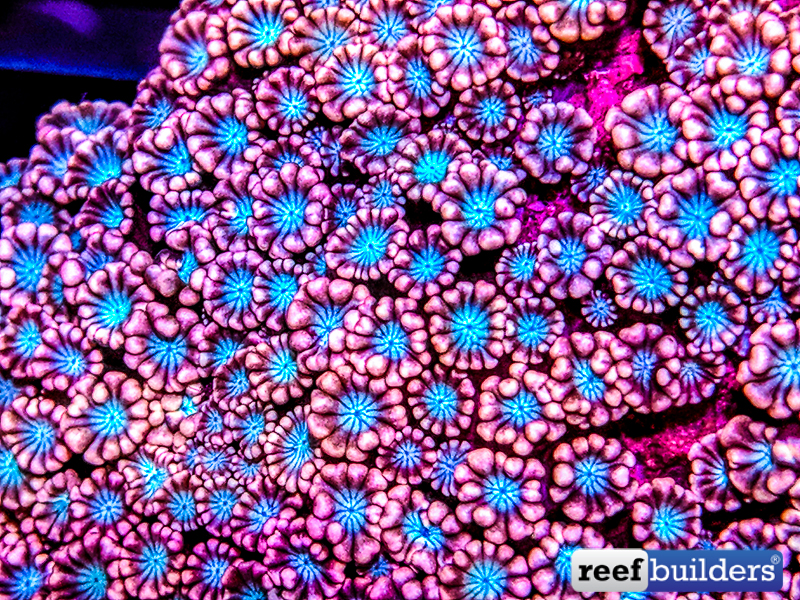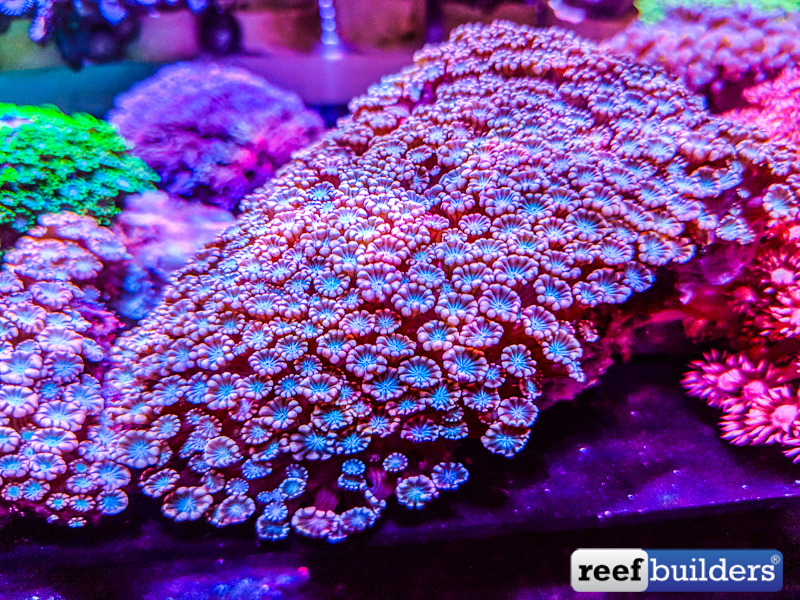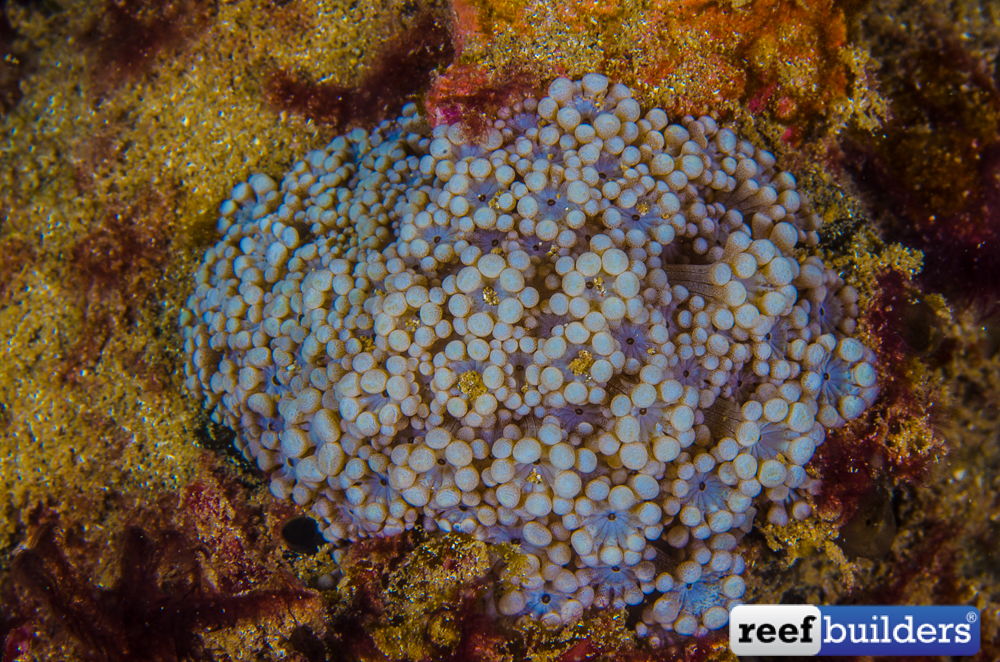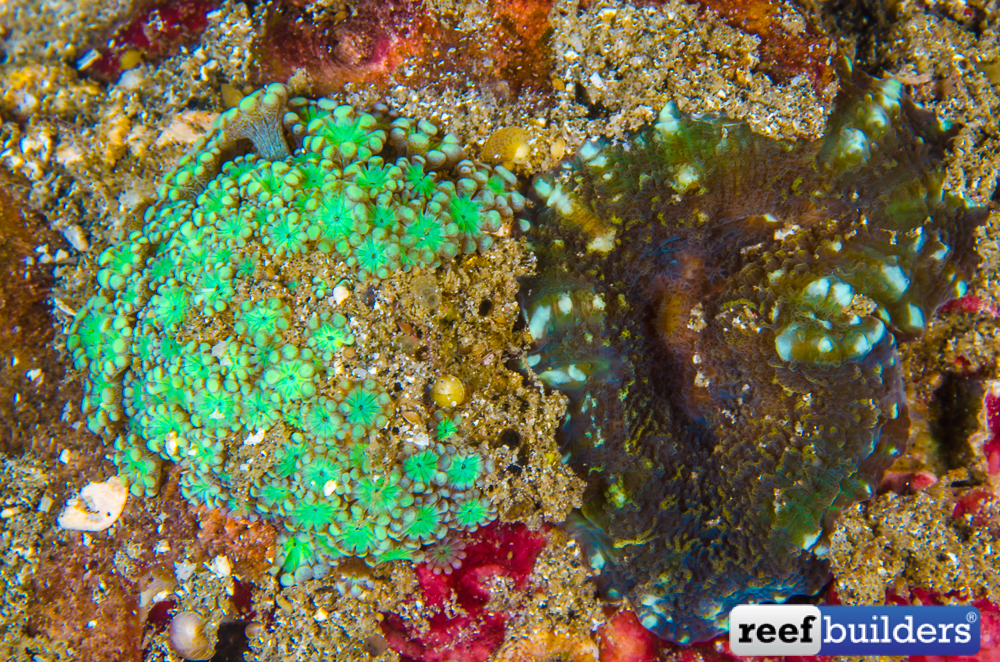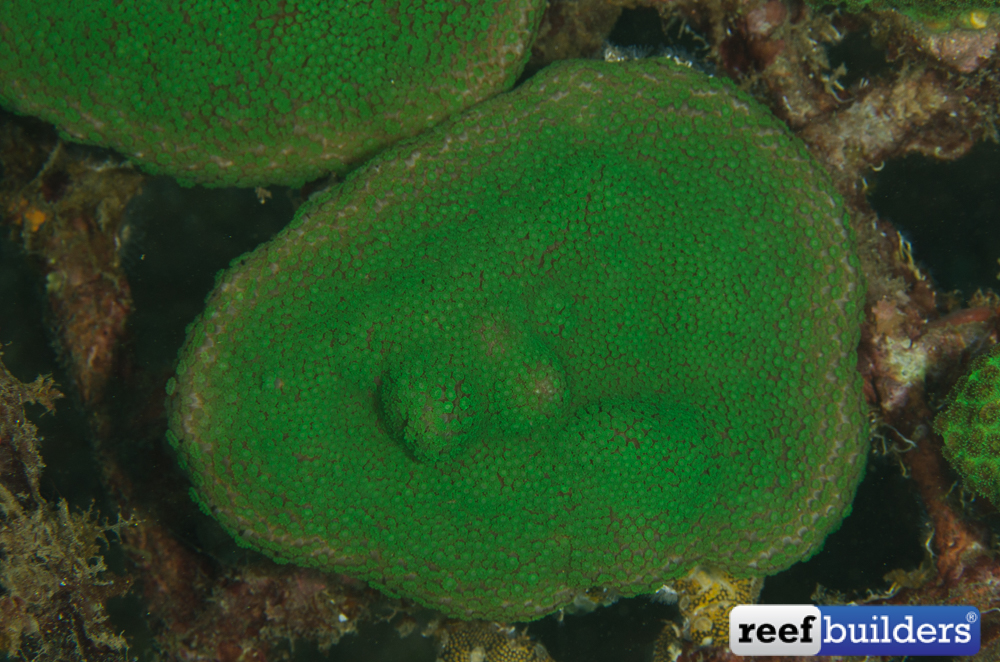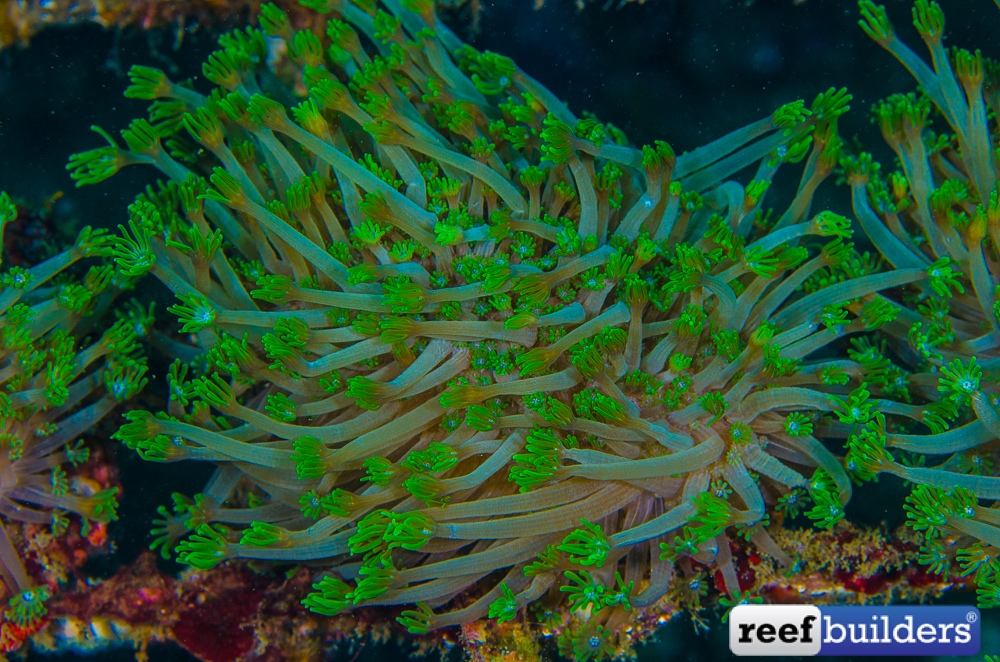Following our series of articles on changes in coral classification after a massive genetic analysis, there is one more coral that got moved in quite a surprising way – Alveopora.
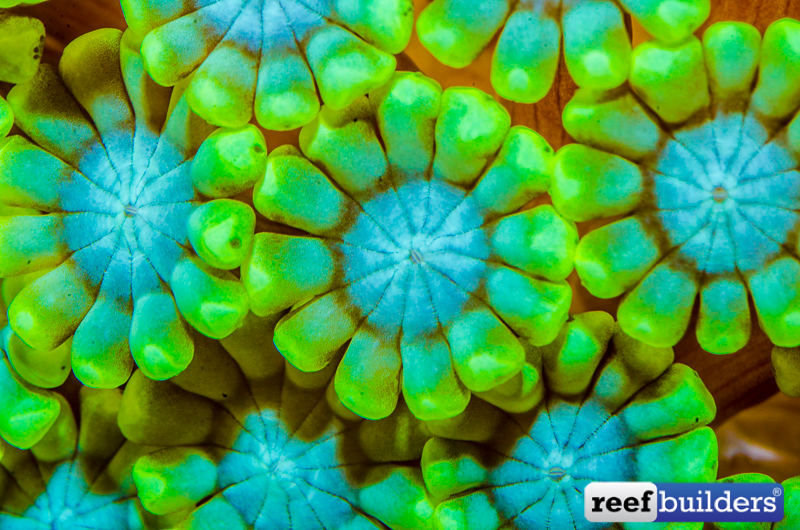
Alveopora used to be the flowerpot coral with 12 fat tentacle, very similar to the 24 skinny tentacles of real flowerpot: Goniopora. Well, sadly but logically, Alveopora is no longer classified as a flowerpot anymore. Despite the superficial resemblance, Alveopora has been transferred to the Acroporiidae family… Yes it’s now related to Staghorn, Acropora, Isopora, Montipora and one that actually makes a lot of sense Astreopora!
The finding comes from genetic analysis, but also from the fact that Alveopora have almost no visible columellae – the skeletal material that fills the center of the corallite. Goniopora or Porites on the other hand have a dense columellae, which give them their very heavy thick skeleton. Alveopora skeleton, as it latin names means ‘Hollow pore’ has a very light hollow skeleton, which share the absence of columellae with our beloved Acropora.
We knew for a long time, that they were different from Goniopora; the latter one is pretty temperamental, and its maintenance was difficult for a long time, while Alveopora is a very forgiving coral in aquarium environments.
They even have the coral species Alveopora japonica that lives in the highest latitude, all the way to Korea and Japan, together with kelp forest. And some that can be found all the way to over 100 m (300 feet) deep shows the extreme adaptability of this genus and explains why aquarists are so successful with it. It makes this coral very important to us, as it’s the perfect beginner LPS and its colorful tentacles going with the flow add a very nice touch of movement to the reef tank.
The classic imported specimen usually come from shallow water, but very turbid and silty, the classic condition of Australian Inshore reefs. So they don’t need much light, but enjoy quite heavy feedings.
It was very easily maricultured in Indonesia, and even some spawning with settling larvaes have already been witnessed. Which makes this genus even more important to us, as we can not only produce them asexually, but also sexually. All this doesn’t really change anything for us, as the name doesn’t change, and we knew for a long time they were different from Goniopora. But from now on, we know why!


